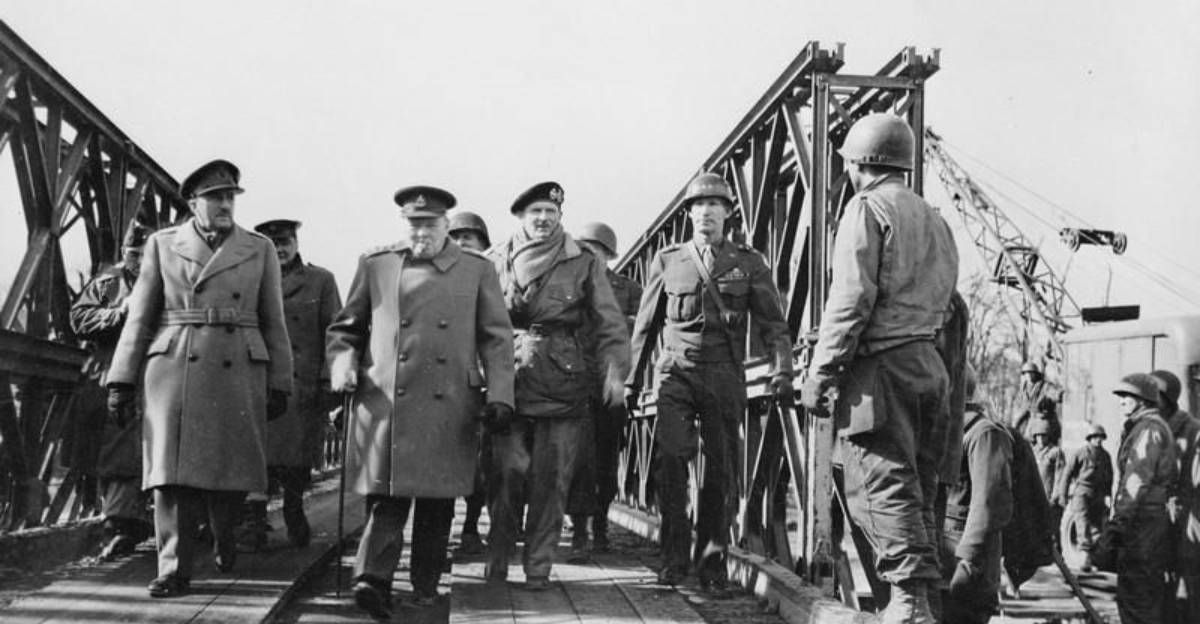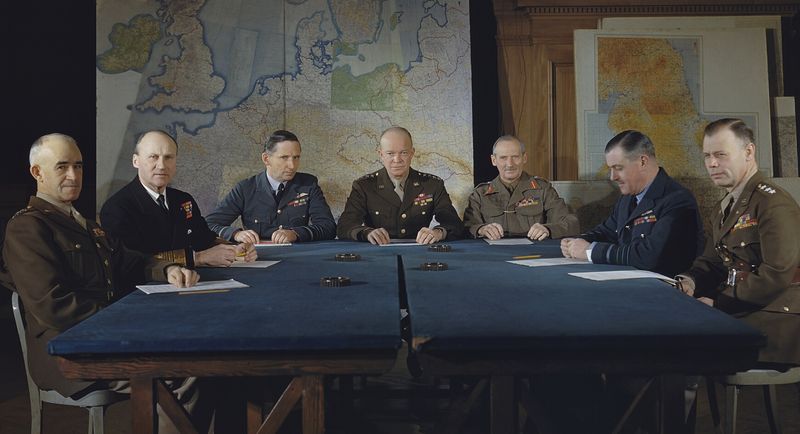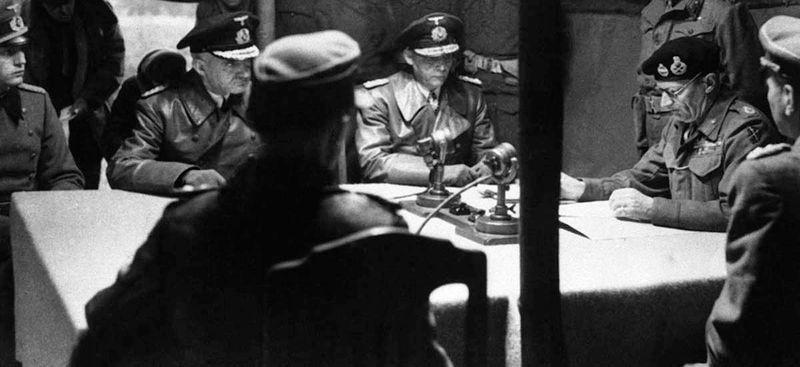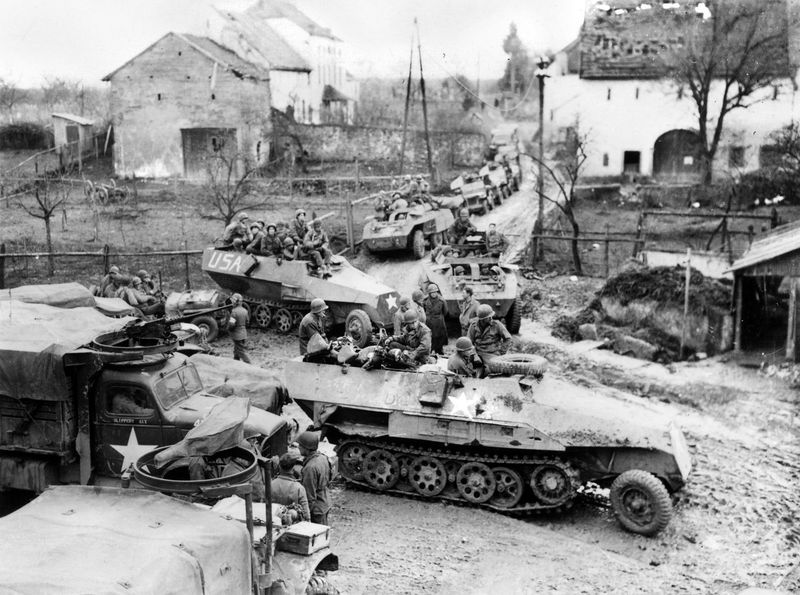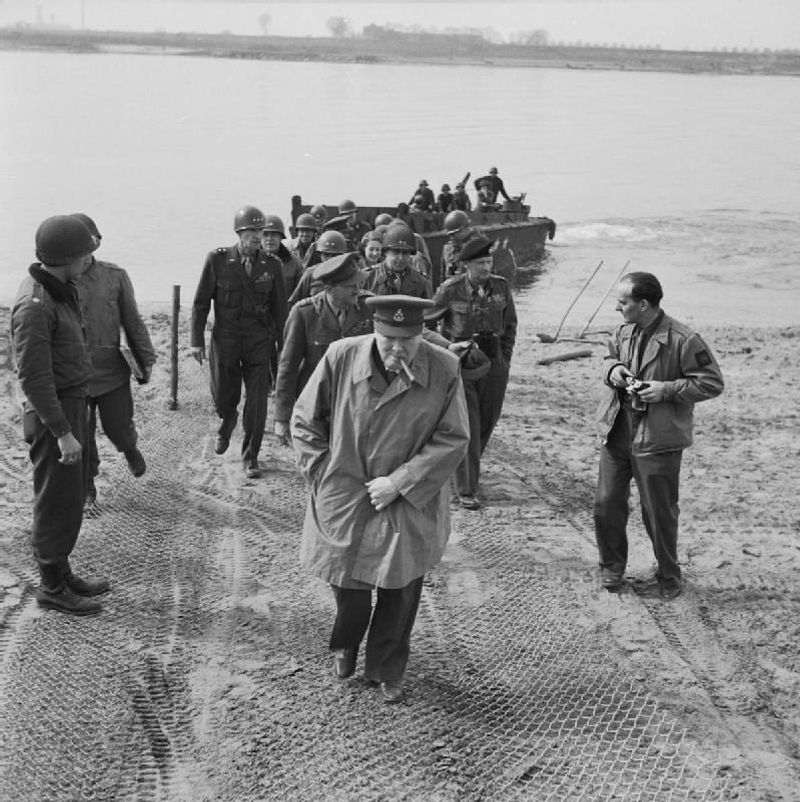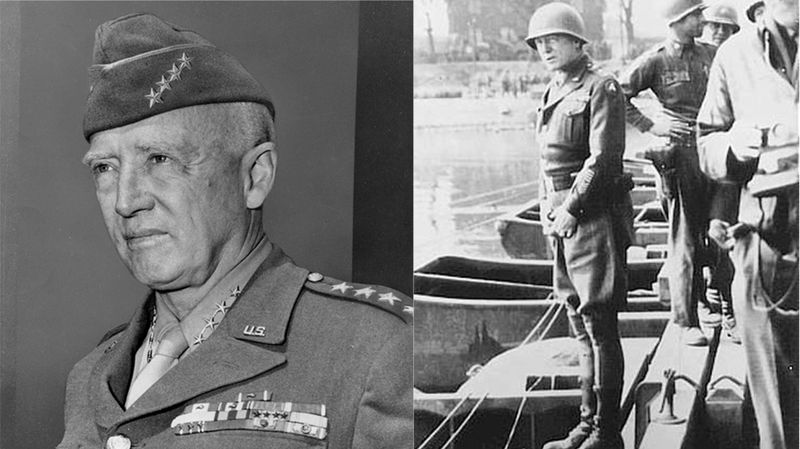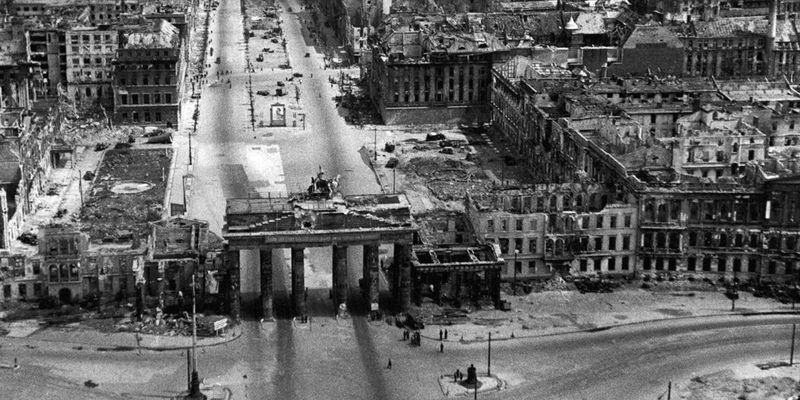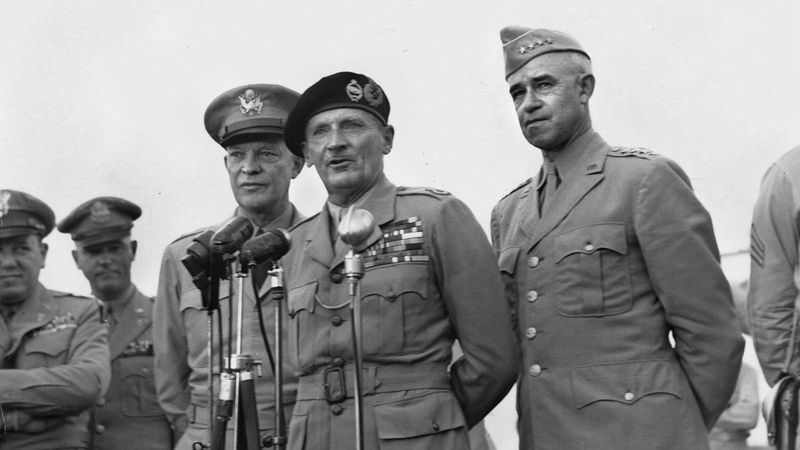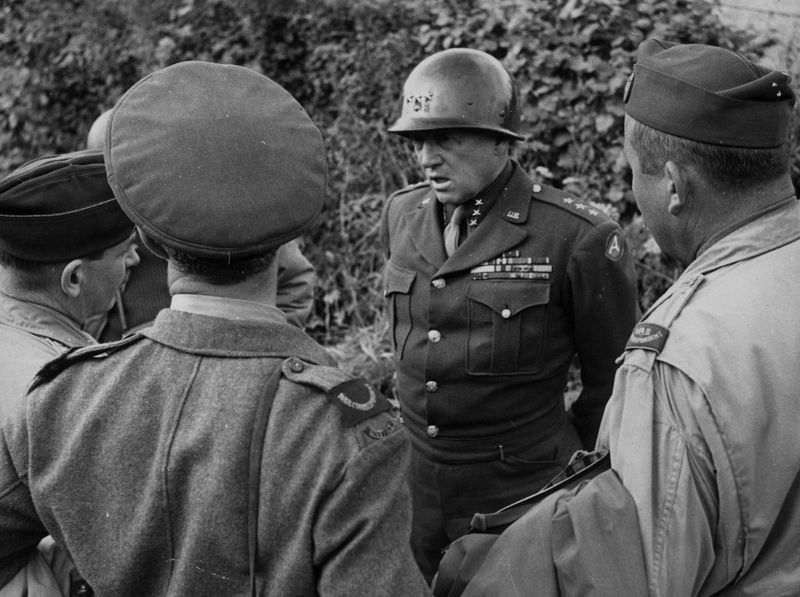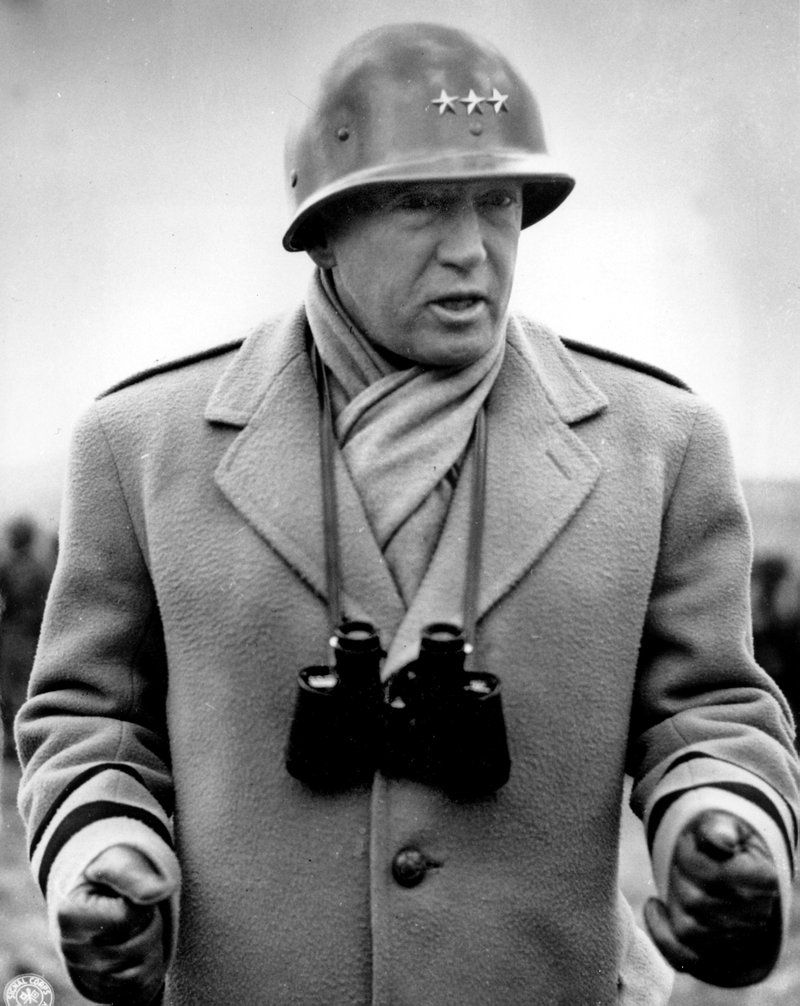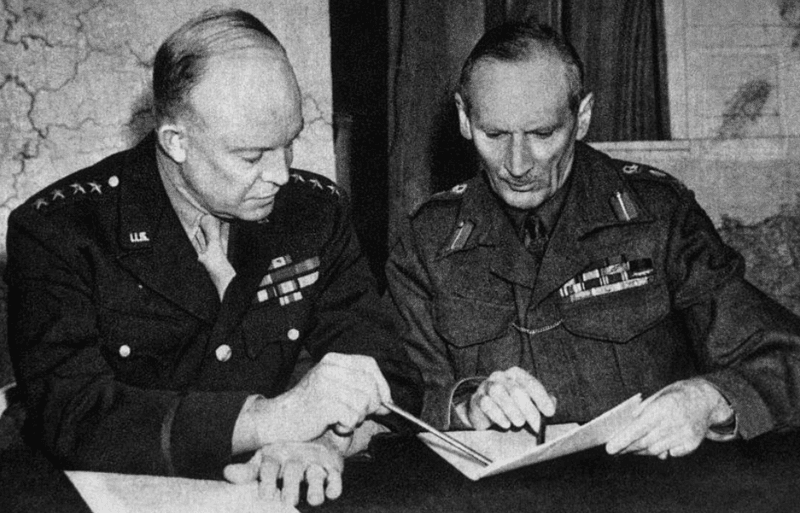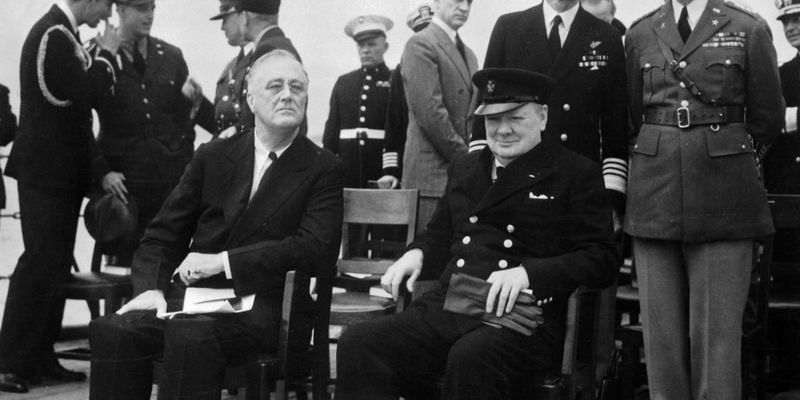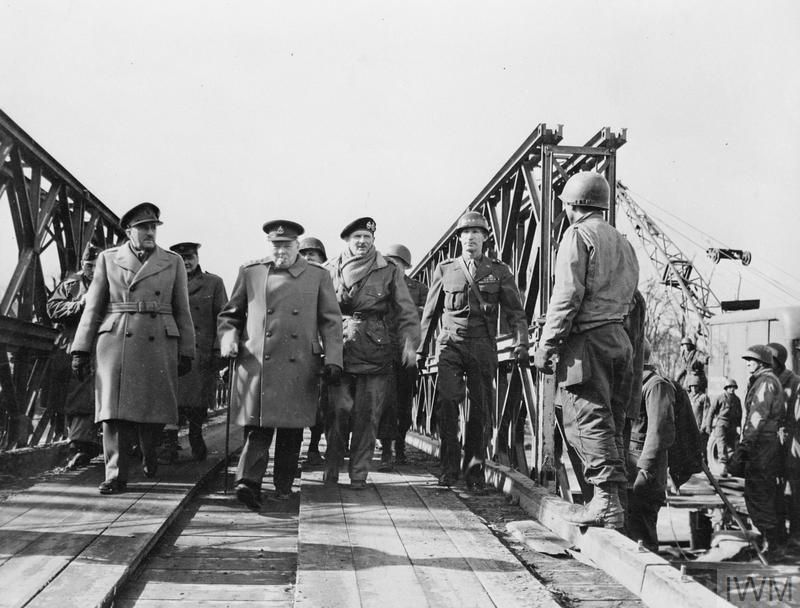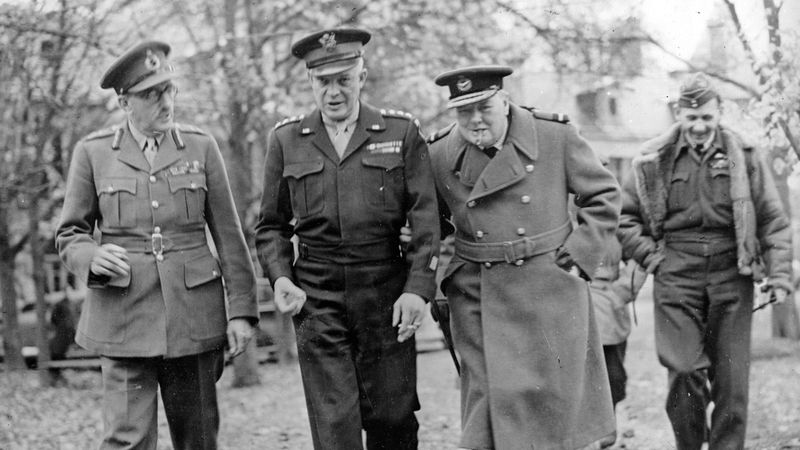The battle for the Rhine between Generals Patton and Montgomery was a high-stakes contest marked by strategic maneuvers, ego clashes, and daring feats. This list captures 13 of the most dramatic moments in their struggle, offering a vivid glimpse into the personalities and decisions that shaped the outcome of their historic confrontation.
1. Eisenhower’s Controversial Decision to Split the Offensive
Eisenhower’s choice to implement a broad front strategy shocked both generals. Instead of a single decisive thrust, he demanded collaboration, sparking tension. This decision forced Patton and Montgomery to share strategic control.
Patton, known for his aggressive approach, felt stifled, while Montgomery’s meticulous nature was challenged by the need to adapt. The decision impacted the flow of the campaign, requiring both generals to adjust their tactics.
Eisenhower’s intention was to maintain balance and prevent overextension, but it was viewed by many as a controversial move that set the stage for internal rivalries.
2. Montgomery’s Operation Plunder Gets the Green Light
Montgomery’s Operation Plunder aimed for a Rhine crossing at Wesel, set to unfold with precision. Priority support included paratrooper drops from Operation Varsity, emphasizing the scale of the endeavor.
Montgomery’s plan was meticulous, involving intricate logistics and coordination. This frustrated Patton, whose forces were eager for swift action, believing they could achieve the crossing sooner.
The operation’s approval highlighted Montgomery’s influence and strategic patience, showcasing his ability to secure necessary resources, but it also intensified the rivalry with Patton, who sought faster results.
3. Patton’s Secret Rhine Crossing at Oppenheim
Patton, ever the maverick, executed a surprise crossing of the Rhine at Oppenheim on March 22, 1945. Without official approval, he beat Montgomery to the punch.
This bold move caught both Montgomery and Eisenhower off guard, igniting fury and admiration alike. Patton’s unorthodox approach exemplified his daring and willingness to bypass bureaucracy for strategic gain.
The crossing showcased his ability to act decisively, relying on element of surprise. It became a defining moment, illustrating his leadership style and the competitive spirit that fueled the race to the Rhine.
4. Montgomery’s Demand for Glory and Recognition
Montgomery insisted that his Rhine crossing be the centerpiece of Allied efforts, demanding a grand press rollout. He sought recognition and public acknowledgment for his strategical prowess.
His need for attention and credit created friction with American generals who viewed it as self-promotion. Montgomery’s actions revealed a deeper desire for validation amidst the high-stakes backdrop of war.
This demand for glory intensified the rivalry with Patton and strained Allied relations, highlighting the personal ambitions that sometimes overshadowed collective goals.
5. Patton’s “Pee in the Rhine” Moment
Patton’s infamous act of urinating in the Rhine became a symbolic gesture of defiance. He reportedly said, “I’ve been looking forward to this for a long time.”
Known for his bold theatrics, Patton’s action was a personal triumph and a rebellious statement against the formalities of war. It became an iconic moment that captured his irreverent spirit.
The act was not just about bravado; it was a celebration of a hard-fought victory and a personal milestone, illustrating Patton’s larger-than-life personality and disdain for conventional decorum.
6. A Race for Berlin—Then a Sudden Stop
Both Patton and Montgomery shared ambitions of capturing Berlin, but Eisenhower’s decision to let the Soviets take the capital first altered their plans.
This political maneuver left Patton frustrated, as he was eager to continue his advance. Montgomery, too, felt sidelined, viewing the choice as a strategic misstep.
The halt to their race symbolized the changing priorities in wartime strategy, balancing military objectives with post-war considerations. It was a poignant reminder of the complex interplay between individual ambitions and global diplomacy.
7. Clashing Press Conferences
Montgomery’s March 24 press briefing painted him as the architect of Allied victory, downplaying Patton’s achievements. This self-congratulatory tone angered American commanders.
Eisenhower had to intervene to calm the rising tensions. The press conferences became a stage for ego clashes and competitive narratives.
Patton’s contributions were overshadowed by Montgomery’s portrayal, intensifying the rivalry. The media circus around these events highlighted the role of public perception in military leadership and the ongoing struggle for recognition between the two generals.
8. Competing for Supplies
Patton’s Third Army and Montgomery’s 21st Army Group constantly vied for resources. The competition for fuel and logistics was fierce during the final push into Germany.
This logistical brinkmanship led to delays and frustration, as both generals sought to outmaneuver each other in supply lines. The stakes were high, with each seeking to maximize operational effectiveness.
The struggle for resources underscored the importance of supply chains in warfare and revealed the underlying tensions even within allied forces, where collaboration was critical but often hampered by individual ambitions.
9. The Battle of the Bulge Fallout
Patton’s rapid intervention in the Battle of the Bulge, particularly the relief of Bastogne, shifted perceptions in Eisenhower’s eyes. This move embarrassed Montgomery, who hesitated in responding.
Patton’s decisive actions demonstrated his ability to act swiftly under pressure, enhancing his reputation. The aftermath of this battle fed into their ongoing rivalry.
For Montgomery, it was a moment of introspection, as he faced scrutiny over his cautious approach. This event became a turning point, reflecting the broader strategic differences and the personal competition that defined their interactions.
10. Eisenhower’s Balancing Act
Navigating the egos of Patton and Montgomery was a constant challenge for Eisenhower. Behind closed doors, he often expressed his frustration, referring to their antics as “a damned nuisance.”
Eisenhower’s role was pivotal in maintaining focus on the broader objective. His diplomatic skills were tested as he balanced their competing visions and managed their egos.
The strained dynamic required Eisenhower to act as peacemaker, ensuring that personal rivalries did not derail strategic goals. His leadership style was characterized by patience and a commitment to unity despite the discord.
11. British-American Cultural Clashes
Montgomery’s British formality often clashed with Patton’s American bravado, reflecting broader cultural tensions. Their leadership styles mirrored these differences, affecting coordination.
The cultural divide was not just a matter of personal preference; it influenced communication and decision-making. The contrasting approaches required constant negotiation and adaptation.
This dynamic highlighted the challenges of international alliances, where unity was essential yet complicated by diverse military traditions. Such cultural clashes added a layer of complexity to their partnership, demanding mutual understanding and respect.
12. The Allied Rhine Crossing Parade
Montgomery’s Rhine crossing included a grand military parade, intended as a show of Allied strength. However, to many Americans, it appeared self-serving.
The parade showcased military might and was a statement of achievement. Yet, it sparked criticism, especially from Patton’s camp, where results-driven action was prioritized over displays.
This event underscored differing priorities within the Allied forces, where symbolic gestures were often at odds with practical objectives. The parade became a point of contention, reflecting the ongoing struggle for influence and recognition during the campaign.
13. Legacy and the Postwar Narrative
In the aftermath of the war, both Patton and Montgomery shaped their narratives. Patton emphasized speed and daring, while Montgomery focused on planning and control.
Their memoirs and interviews kept the rivalry alive, each recounting their version of events. This postwar storytelling highlighted how personal legacies were crafted.
The divergent narratives revealed much about their personalities and ambitions, influencing public perception and historical analysis for years to come. Their stories became part of the larger tapestry of WWII history, emblematic of the complex interplay between individual achievements and collective memory.
